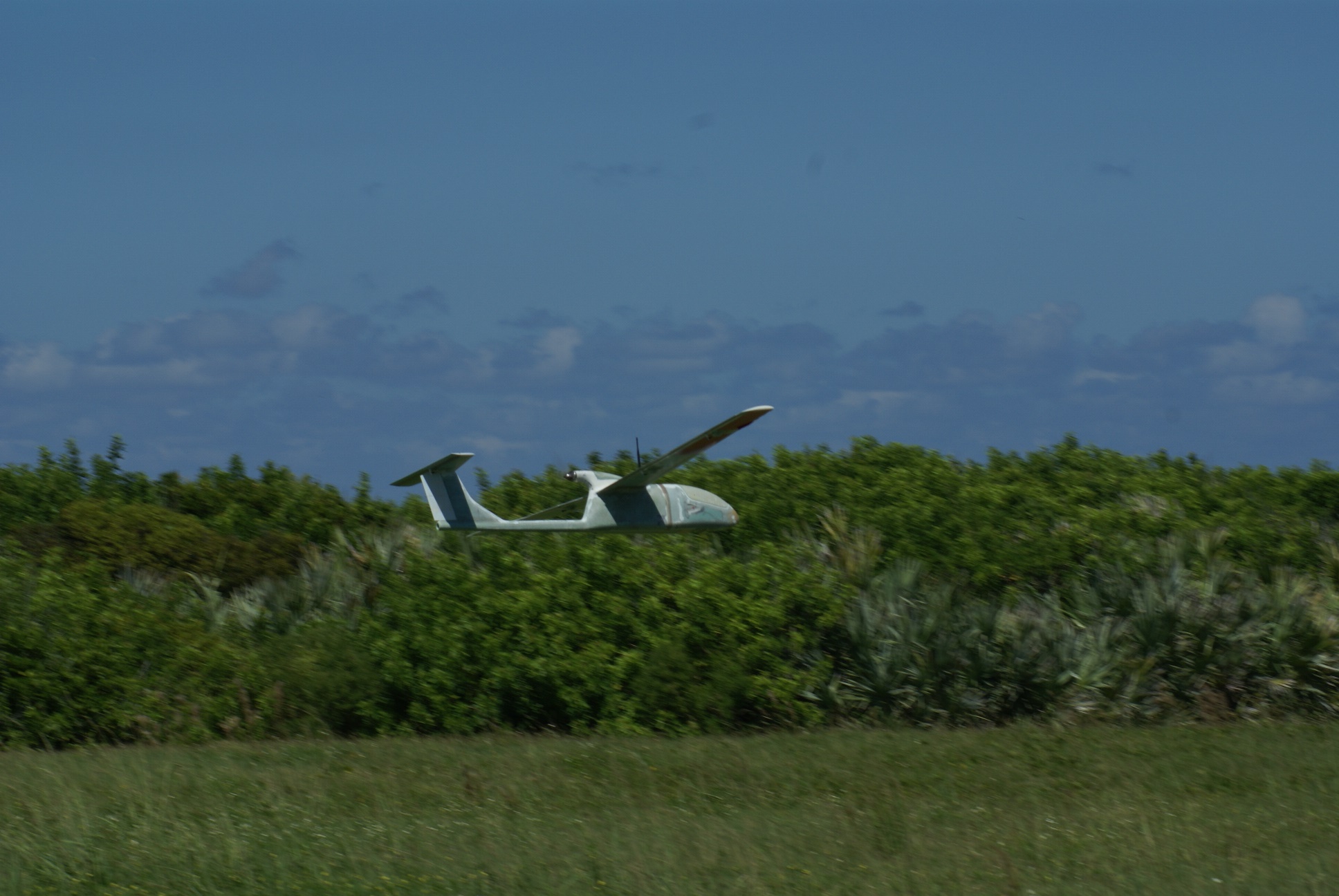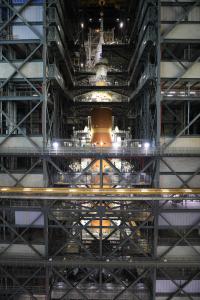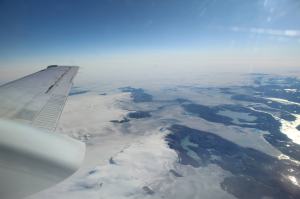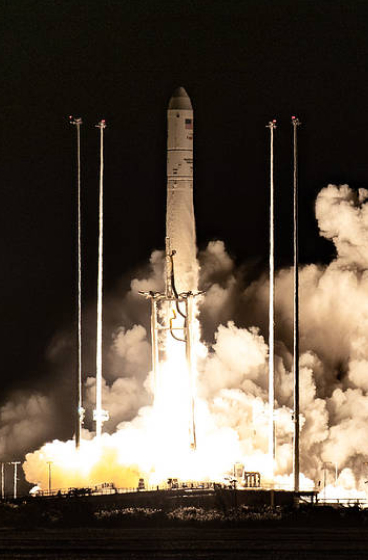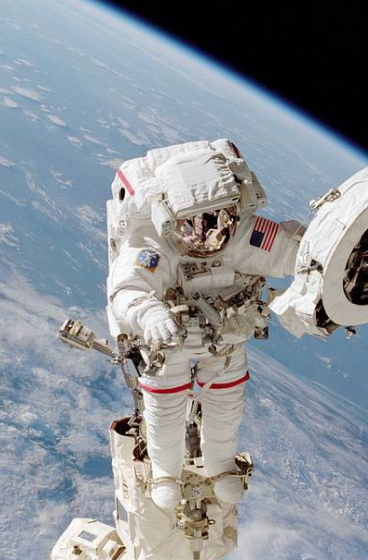In the future, unmanned aircraft systems (UAS), more commonly known as drones, could be used to cover events like the rollout of NASA’s Space Launch System rocket and Orion spacecraft to the pad for launch, help rovers on Mars, or even deliver packages. But for now, members of Flight Operations and Information Technologies at NASA’s Kennedy Space Center in Florida are looking at how drones could enhance management of the airspace around the center and its Shuttle Landing Facility.
The Federal Aviation Administration (FAA) projected that nearly 1 million drones were expected to be purchased as gifts during the 2015 holiday season. A study conducted by Bard’s College’s Center for the Study of the Drone in 2015 revealed that “241 close encounters between drones and manned aircraft were reported. A few of those incidents required aircraft pilots to veer out of the way of an incoming drone.”
“Unmanned aircraft systems can be helpful,” said Mike Tillema, chief of Flight Operations. “They can be used to inspect facilities and structures around the center, and have even been tested during security training missions.”
According to John Graves, chief UAS pilot, Kennedy uses a variety of small UAS systems for photography and asset protection. Trial runs of building and roof inspections currently are being tested around the center.
NASA considers UAS a type of aircraft, therefore UAS systems are required to be inspected and UAS pilots undergo rigorous training and recertification.
“As we’re learning and growing in UAS operations, we’re finding more things to do with them every day,” Graves said.
Recently, NASA and Jacobs Space Operations engineers on the Test and Operations Support contract used a UAS equipped with a high-resolution camera to inspect the condition of the three 600-foot-tall lightning protection towers at Launch Pad 39B and found corrosion in some of the cables. The FAA-registered drone was operated by a licensed NASA UAS pilot using a live video feed to navigate around the towers.
According to the Aerospace Industries Association, an aerospace and defense trade association, UASs have been used to survey archaeological sites, for search and rescue missions, to help pinpoint hotspots for potential wildfires in California, and to patrol the Kruger National Park in South Africa to help park managers and farmers catch rhino poachers.
Tillema said the big question is how to manage the increased traffic that could impact airspace near the center.
For more than 50 years, Kennedy and Cape Canaveral Air Force Station, also in Florida, were the sites of rocket and spacecraft launches that carried humans and payloads into space, the place where space shuttles soared into space and came gliding to a rest at the conclusion of missions.
The increased presence of UASs, in varying shapes and sizes, most equipped with cameras, presents a unique challenge with other aircraft flying in and out of or nearby the center. About two years ago, Joe Torsani, the center’s chief pilot and Aviation Safety Officer thought it was time find out who was flying what near Kennedy, and the Space Coast Aviation Safety Alliance (SCASA) was created.
In October 2015, Torsani, Tillema and other Kennedy Flight Operations members organized and hosted a two-day SCASA workshop at the center. The workshop included an overview of different types of UAS and their operational issues, and featured presentations by several of the participating agencies. Representatives from the NASA Safe Autonomous System Operations Project at Ames Research Center in California gave a progress update on the UAS Traffic Management System in development for NASA.
Alliance participants, all in Florida, include the Florida Institute of Technology (FIT) in Melbourne, Embry-Riddle Aeronautical University in Daytona Beach, Bristow Academy in Titusville, the 45th Space Wing and 920th Rescue wing at Patrick Air Force Base, the FAA’s Orlando and Atlanta regional offices, Flight Safety International organizations, the Department of State, DynCorp, Brevard and Seminole County sheriff’s departments, and local emergency medical service organizations.
“There are all kinds of people flying different kinds of aircraft in the area,” Torsani said. “Our goal was to get everyone together to increase our situational awareness of who is flying what and where, and how the addition of UAS in the area could impact our airspace and safety.”
Tillema said the airspace near Kennedy already is busy with many aircraft flown by FIT, Bristow flying 30,000 hours a year in mostly helicopters, Embry-Riddle flying a variety of vehicles for testing purposes, and the 920th Rescue Wing flying in the area for low-altitude training.
“We’re kind of in the middle of it all,” Tillema said.
As Kennedy prepares for NASA’s journey to Mars, the establishment of the SCASA is a resource that will help to ensure that UAS systems flown on and nearby the center will comply with NASA and FAA guidelines and rules so that the airspace around the multi-user spaceport remains as safe as possible.
Most owners of UAS should be aware of the FAA’s regulations and guidelines with respect to UAS ownership and use. The FAA classifies UASs or drones into three types: public operations (governmental), civil (non-governmental), and model aircraft (hobby).
Some of the regulations include keeping drones at least five miles away from airports and flying them below 400 feet at all times. In December, the FAA made drone registration mandatory. Currently, the registry contains information for 180,000 drones. More FAA drone facts and regulations are available at http://www.faa.gov/uas.
e



























